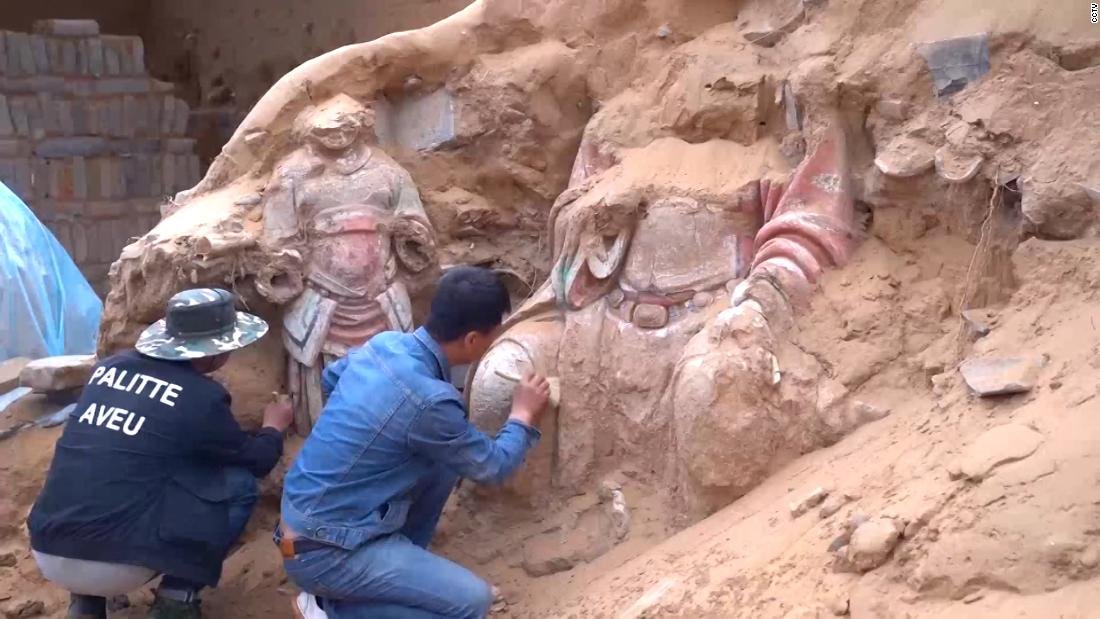The secrets of one of the most influential political forces of the time are now being revealed thanks to ancient DNA evidence and the findings of recent archaeological digs.

The Xiongnu Empire was a nomadic empire that traded on the Silk Road and conquered far-off lands on horseback for three centuries. The Great Wall was built during the conflict between the Xiongnu Empire and imperial China, which is still visible today.
The empire and its people, however, have long been cast into the shadows of history because there are no written records other than those created by Chinese chroniclers who considered the Xiongnu to be barbarians.
The secrets of one of the most influential political forces of the time are now being revealed thanks to ancient DNA evidence and the findings of recent archaeological digs. Two cemeteries, one at Takhiltyn Khotgor, the aristocratic elite cemetery, and the other at Shombuuzyn Belchir, the local elite cemetery, were investigated genetically along the western frontier of the Xiongnu empire in what is now Mongolia.
New study published on Friday in the journal Science Advances stated that, the scientists sequenced the genomes of 17 people interred in the two cemeteries and discovered an “extremely high” level of genetic diversity, suggesting that the empire was likely multiethnic, multicultural, and multilingual. Individual communities contained genetic diversity, indicating that the empire wasn’t just a patchwork of uniform groups bound by a common purpose.
The study’s senior author, Choongwon Jeong, an associate professor of biological sciences at Seoul National University, said in a press release that the findings “give us a better understanding of how the Xiongnu expanded their empire by incorporating disparate groups and leveraging marriage and kinship into empire building.”
Women’s graves had the highest status among the individual graves examined, indicating that they were particularly influential in Xiongnu society. The golden sun and moon symbols, which were Xiongnu symbols of power, were emblazoned on elaborate coffins. Six horses and a chariot’s remains were found in one tomb.
“These elite women possessed the materials not only for enacting power, such as prestigious wares for hosting politicised feasts,” said Bryan Miller, project archaeologist for the study and assistant professor of Central Asian art and archaeology at the University of Michigan.
He explained in an email that “they were highly revered with ample offerings from all those who attended their funerals, demonstrating their continued social importance within their communities throughout their lives.”
The study also provided details on the lives of young Xiongnu people. Boys their age were buried with bows and arrows, just like men. Boys under the age of 11 weren’t.
According to study senior author Christina Warinner, associate professor of anthropology at Harvard University and group leader at the Max Planck Institute for Evolutionary Anthropology, “Children received differential mortuary treatment depending upon age and sex, giving clues to the ages at which gender and status were ascribed in Xiongnu society.”
The research used genetics as a tool to provide deeper insight into the social structure and society of the Xiongnu, according to Ursula Brosseder, a prehistoric archaeologist at the University of Bonn.
According to Brosseder, who was not involved in the most recent study, “I am excited to see more studies of this kind in the future.” “I am thrilled to see that genetics supports this view,” one person exclaimed, “since I was one of those who pointed out that mature women were buried with the most prestigious items.”
The majority of our knowledge about the Xiongnu regime and others that originated on the Eurasian steppe comes from texts from imperial China and ancient Greece, where largely nomadic herders were viewed as inferior. As a result, Brosseder continued, the Xiongnu had frequently been misunderstood.
The Xiongu left a powerful legacy that inspired later nomadic regimes on the Eurasian steppe, such as the Mongols and Genghis Khan.
Many subsequent groups adopted the name Xiongnu (or Hunnu) as they established their own regimes, leading to the perpetuation of so-called ‘Hunnic’ entities even as far as Attila and the Huns at the edge of Europe centuries after the demise of the Xiongnu in Inner Asia. The Mongols took up this legacy when they created their own empire many centuries later.